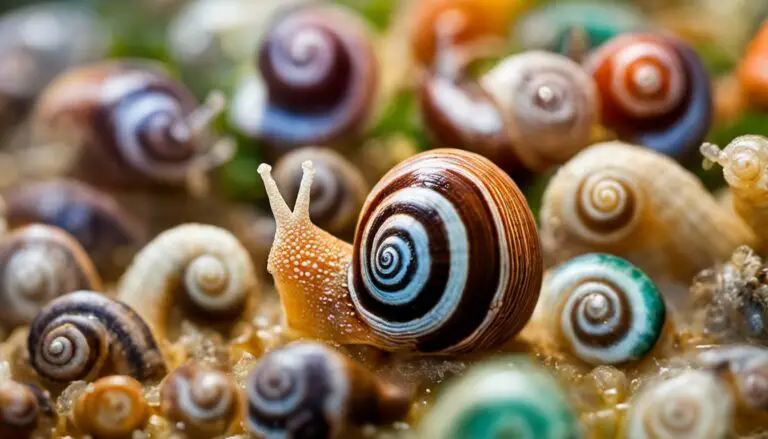What Eats Vermetid Snails
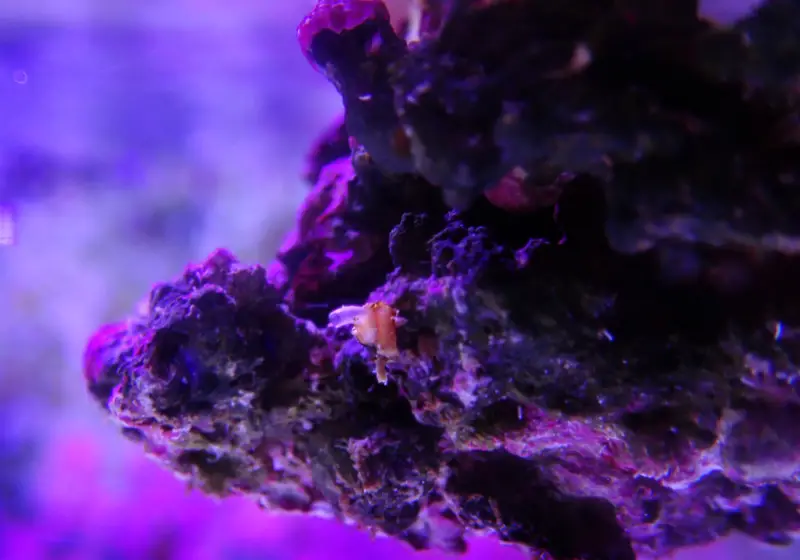
Vermetid snails, sometimes called “spaghetti snails” or “worm snails,” are small, slimy creatures found in aquariums and other aquatic environments. While they are not harmful to fish or plants, they can cause issues for aquarium owners due to their mucus nets, which can impede coral growth and damage coral structures. You might be curious about their natural predators and what keeps their populations in check in nature.

Understanding what eats vermetid snails can help you control their populations in your aquarium or aquatic system. Identifying their predators allows for a natural approach to dealing with them, ensuring that their numbers remain manageable and do not cause significant damage to your marine life.
In the following sections, we will explore these natural predators to provide you with a clear understanding of how to deal with vermetid snail infestations effectively.
Contents
Table of Contents
Understanding Vermetid Snails
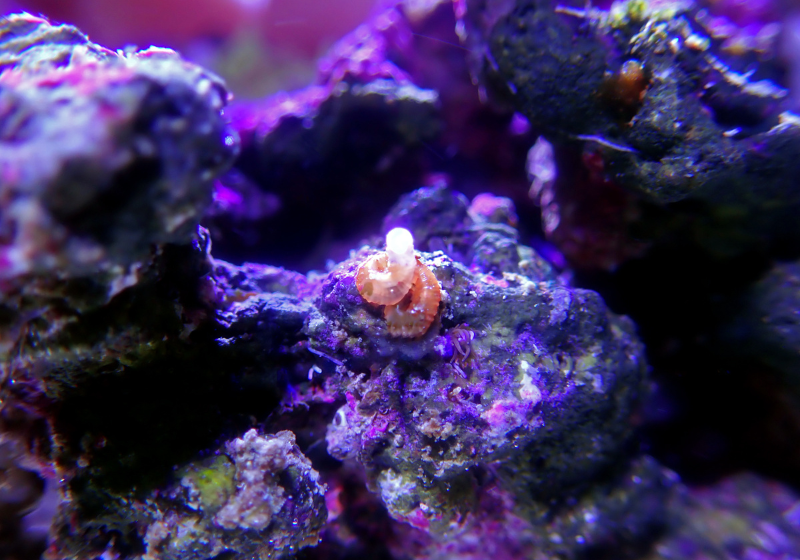
Vermetid snails, belonging to the family Vermetidae, are a unique group of marine gastropods that can sometimes be found in aquariums and reef tanks. However, these small creatures differ from typical snails in a few significant ways.
First, let’s talk about their size and appearance. Vermetid snails are usually less than an inch long, and their spiraled shells grow in an irregular, twisted manner, often branching outwards. These odd-looking shells offer a clue to their alternative common name: worm snails.
As far as their habitat is concerned, vermetid snails attach themselves to hard surfaces within their marine environment. They create calcified tubes to anchor themselves to these surfaces, and as the snails grow, these calcified tubes enlarge. Unlike some other types of snails, vermetid snails have an operculum, which is a protective door-like structure at the opening of their shell.
You might wonder how these snails impact the marine environment and reef tanks. Vermetid snails are filter feeders and use their mucus nets to capture detritus and plankton from the water. While they can help maintain a healthy balance in your aquarium by processing waste, they can also become a nuisance in larger numbers.
Furthermore, their presence can negatively affect the growth and health of corals since their mucus nets can irritate and damage sensitive coral tissue.
In conclusion, understanding vermetid snails is essential for maintaining a healthy and thriving marine or reef environment. Knowing their unique biology, behaviors, and potential impact on your aquarium will allow you to address any issues they may cause effectively.
Feeding and Survival
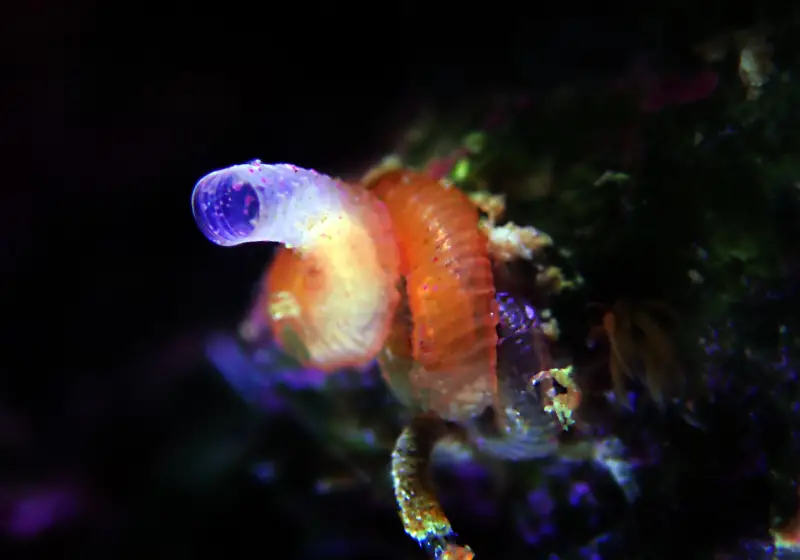
When it comes to feeding, vermetid snails have a unique method. They use mucus nets to capture their food, which consists of detritus and plankton. As filter feeders, these snails play a vital role in the ecosystem by contributing to the decomposition process and helping maintain water quality. In your aquarium, their presence can indicate sufficient food availability.
The mucus net is released from their shells and stretches out like a spider web, catching debris and tiny particles floating in the water. As the net traps detritus and plankton, the snail retracts it to feed on the captured food. This process assists them in their survival within a diverse ecosystem, where they compete with various organisms for nutrients.
However, vermetid snails can also become a nuisance in some marine aquariums, particularly for coral ecosystems. The snails may facilitate the spread of algae, ultimately harming the corals. Understanding their feeding habits allows you to address their growing population and prevent potential issues.
Knowing they have natural predators is important in dealing with a vermetid snail infestation. Some examples include the threadfin bream from the Aeolosomatidae family and certain species from the Portunidae family, such as the blue crab. These predators can help manage the snail population and protect your aquarium from damage caused by them.
To summarize, vermetid snails filter feed using mucus nets to capture detritus and plankton, contributing to their survival and role in the ecosystem. However, their presence can also harm coral growth in marine aquariums. Understanding their feeding habits, natural predators, and their potential impact on your aquarium will allow you to address any issues proactively.
Habitat and Ecology

Vermetid snails are small marine gastropods typically found in shallow waters attached to rocks, hard surfaces, or even coral reefs within their ecosystem. They can cause issues within the marine habitat, especially to corals, so it is essential to understand their ecology and interactions with other marine animals. In this section, we will discuss the habitat and ecology of these snails in more detail.
When you observe the habitat of vermetid snails, you’ll notice they prefer to attach themselves to rocks or other hard surfaces, where they can secure a place to build their irregular, worm-like shells. They often position themselves to take advantage of the water current.
The current plays a vital role in providing them with food, as these snails are filter feeders, meaning they obtain essential nutrients from the water surrounding them. This includes feeding on substances like coral snow, which contains organic particles shed by coral polyps.
The occasional nutrient spike in the water can lead to an increase in the population of vermetid snails. When they multiply, they contribute to the ecosystem by adding complexity to the habitat structure. On the other hand, they also negatively impact corals when they settle on their surfaces and compete for resources.
Predators that feed on vermetid snails can help control their population, and understanding these interactions is crucial for a well-balanced ecosystem. Some of the natural predators of vermetid snails include murex snails and triggerfish. Portunidae, a family of crabs that include the blue crab, are also known to consume vermetid snails.
As you can see, the habitat and ecology of vermetid snails are influenced by various factors, including their location on rocks and hard surfaces, the water current, and their interactions with other marine organisms. Ensuring a healthy balance in the ecosystem is crucial for the survival of these marine creatures and their surrounding habitat.
Reproduction and Growth

Vermetid snails reproduce by releasing spermatophores – packets of sperm – into the water. These spermatophores then find their way to egg capsules, which the female snails have laid. In many cases, the egg capsules are laid directly on the snail’s foot, a muscular organ that these marine gastropods use for both locomotion and anchoring.
As the spermatophores come into contact with the egg capsules, fertilization occurs, developing young vermetid snails. These snails grow rapidly within the safety of their capsules, and once they reach a certain stage, they break free and begin their life in the marine environment.
During their growth, vermetid snails form irregular shells that differ significantly from typical snail shells. The reason for this deviation from the norm can be attributed to their unique sedentary lifestyle, where they use their foot to anchor themselves to hard surfaces.
While growing, these marine gastropods need a constant supply of nutrients. Their diet primarily consists of plankton and organic detritus, which they capture using their mucus webs. This feeding strategy allows them to survive even in nutrient-poor environments, giving them an edge over other snail families.
In summary, vermetid snails exhibit unique and efficient reproductive methods, ensuring the success of their future generations. As they grow, their irregular shells and resourceful feeding tactics contribute to their survival in various aquatic environments.
Impact on Aquatic Ecosystems

Vermetid snails, tiny creatures with long, thin bodies and small spiral shells, can become a nuisance in your aquarium or reef tank. Their presence may lead to harmful effects on corals and other aquatic life. This section will explore the impact of vermetid snail infestations on aquatic ecosystems.
When vermetid snails become too abundant in your aquarium or reef tank, they can cause damage to coral, particularly SPS corals. These snails produce a sticky mucus web to trap food particles, which can smother coral polyps and inhibit their ability to feed, ultimately leading to coral decline or death. As a result, maintaining a healthy coral population can be challenging in the presence of vermetid snails.
Another consequence of a vermetid snail infestation in your aquarium is increased algae growth. Since these snails feed on organic debris and microalgae, they can contribute to the proliferation of algae in the water. When algae overgrow corals, they can compete for light and nutrients, thereby causing stress on coral populations.
In addition to damaging corals and promoting algae growth, vermetid snails can be viewed as a parasite in reef tanks. They have been known to settle on and compete with other sessile invertebrates for space and resources, making it even more challenging to maintain a healthy ecosystem within the aquarium.
To manage vermetid snail infestations in your aquarium or reef tank, it is crucial to identify their presence early on, monitor their population, and implement appropriate measures to control their growth. Doing so can protect your corals, manage algae growth, and maintain a balanced and thriving aquatic ecosystem.
Methods of Controlling Vermetid Snails

Controlling vermetid snails in your aquarium is essential to maintaining a healthy environment for your corals and other sea creatures. You can choose from several methods based on your preference and the severity of the infestation.
One option is manual removal. Using forceps or tweezers, carefully pluck the vermetid snails from the surfaces they are attached to. This method can be time-consuming but is effective for smaller infestations.
Another popular strategy is the superglue method. This involves using a small amount of superglue to seal the opening of the vermetid snail’s tube, preventing the snail from exiting and eventually starving it out. However, be cautious when using this method, as killing many snails at once could lead to nutrient spikes in your tank 1.
If you’re looking for a more aggressive approach, hydrochloric acid can be used. Apply a small amount of hydrochloric acid to the shell or tube of the vermetid snail using a pipette or syringe. This will dissolve the snail’s calcium-based structure, effectively killing it. Note that you should only perform this process outside of the tank to protect other tank inhabitants.
Beneficial bacteria can also help control vermetid snail populations. Good bacterial colonies contribute to a healthy tank by breaking down waste and reducing available snail food sources.
Introducing sea snails that are natural predators of vermetid snails could help control their numbers. For instance, the bumblebee snail is known to feed on vermetid snails, although they may not be their first food choice.
Lastly, the lancing method is another tactic you can try. This involves using a needle or sharp tool to pierce the vermetid snail’s body, thus killing it. Be cautious not to damage any beneficial organisms or corals in your tank while doing this.
Consider these methods to determine the best approach to controlling vermetid snails in your aquarium. Remember always to prioritize the well-being of your other tank inhabitants and monitor any environmental changes during the process.
How to get rid of Vermetid Snails!
Natural Predators of Vermetid Snails
Vermetid snails can be quite a nuisance in marine aquariums, and while they may be small and harmless-looking creatures, they can cause significant harm to your corals. To effectively control their population, you must identify and introduce some of their natural predators into your tank. Let’s take a look at the various creatures that can help get rid of vermetid snails.
Fish: One of the fish species known for consuming vermetid snails is the yellow coris wrasse, native to the Indo-Pacific region. These wrasses use their long, thin mouths to suck the snails out of their shells, efficiently controlling the vermetid snail population in your aquarium. Another fish that feeds on vermetid snails is the copper-banded butterfly, which can also keep their population at bay.
Crabs: Crabs that belong to the Portunidae family, like the blue crab, are also known to prey on vermetid snails. These crabs can be found in the Atlantic Ocean and the Gulf of Mexico, and their strong pincers and natural feeding habits make them effective snail predators in marine environments.
Shrimp: Some species of shrimp eat vermetid snails as well. For instance, bumblebee snails from the Cerithioidea superfamily have been observed feeding on these tiny pests. With their specialized mouthparts, they can reach deep into the snail shells, helping to maintain the balance in your tank by reducing vermetid snail numbers.
Introducing these natural predators to your marine aquarium will help you control vermetid snail infestations and, in turn, protect your corals from harm. However, it’s essential to note that each predator’s suitability depends on your aquarium’s specific conditions and its compatibility with other tank inhabitants.
Always research and consider your tank’s unique ecosystem before adding any new species. Remember, maintaining a balanced and harmonious marine environment is the key to the well-being of all your aquatic creatures.
Role and Importance in Aquaculture
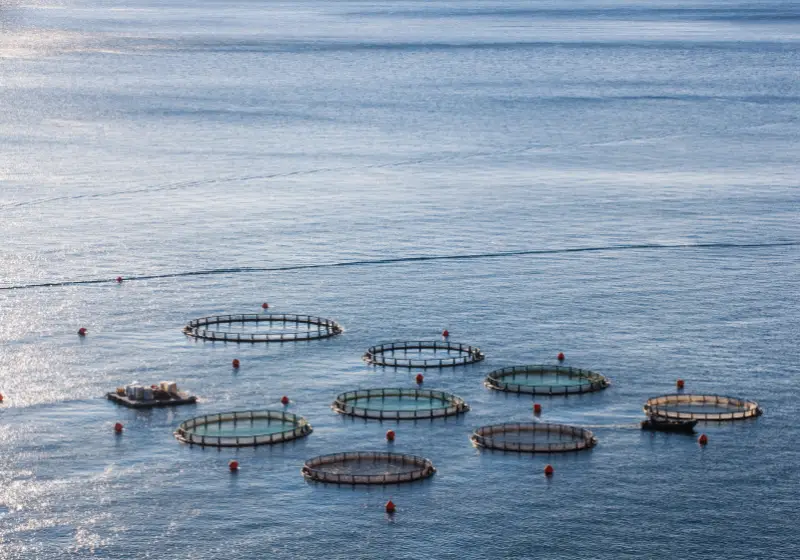
Vermetid snails play a significant role in aquaculture, particularly for aquarists who maintain reef tanks. These small gastropods can create challenges for both corals and marine setups, so it’s essential to understand their ecology and behaviors to manage them effectively.
First, you must recognize the impact of vermetid snails in your reef tank. Although they may initially seem harmless, their presence can reduce coral growth, survival, and photophysiology ([1]). This happens because the snails form calcified tubes on rocks, corals, and other structures, which can be unsightly and negatively affect the appearance of your tank ([2]).
As for their natural predators, understanding their role can provide vital insights for managing vermetid snail populations and dealing with indirect responses to changes in a coral reef’s food-web structure ([3]). By identifying and incorporating suitable predators in your reef tank ecosystem, you can help control vermetid snail populations.
Lastly, it’s crucial to address vermetid snail infestations quickly and efficiently. These gastropods can pose problems for corals in marine setups, which may mean you’ll need to remove them as soon as possible to prevent any long-term damage ([4]). Developing strategies for removal and prevention will ensure a healthy and thriving reef tank environment.
In conclusion, managing vermetid snails is an essential aspect of aquaculture for reef tank enthusiasts. By understanding their role, identifying their predators, and addressing infestations promptly, you can maintain a healthy and visually appealing marine ecosystem.
Case Study: Vermetid Snails in Home Aquariums

Imagine you have a thriving reef tank filled with beautiful corals and various aquatic life. One day, you notice a few tiny, spiral-shaped shells with long, thin bodies on your corals or live rocks. These are vermetid snails, and they can cause problems in your aquarium.
Vermetid snails can harm corals by impeding their growth and damaging their skeletal structures, particularly in LPS and SPS corals. They feed by spewing mucus nets from the ends of their shells, capturing detritus and plankton, which can disrupt the delicate balance of your reef tank. It’s essential to address a vermetid snail infestation quickly and efficiently for the health of your marine life.
To get rid of vermetid snails, you have a few options. First, you can manually remove them by carefully chipping away at their shell with a small tool or tweezers. However, this can be time-consuming and risky, especially if your aquarium has numerous snails.
Another way to handle the infestation is to add natural predators, such as yellow coris wrasses or copper-banded butterflies, which can help control and reduce the snail population. Remember that introducing new species to your tank should always be done cautiously, as each creature can affect the tank’s balance and have specific care requirements.
You can use hydrochloric acid as a last resort if you prefer a more targeted approach. You’ll need to remove the affected coral or live rock from the tank and apply a small amount of acid directly to the snails. Remember to exercise caution by using gloves and protective eyewear, as hydrochloric acid can cause injury if handled improperly.
In summary, always monitor your aquarium’s health and promptly address any issues that arise, such as vermetid snail infestations. Your corals and other marine life will thank you for providing a safe, clean environment in which to thrive.
FAQs: What Eats Vermetid Snails
Do emerald crabs consume vermetid snails?
Emerald crabs are known to be opportunistic omnivores and might eat vermetid snails. However, their effectiveness in controlling vermetid snail populations can vary, and they might not be your best option for complete control as they often prefer other food sources.
How effective is coral dip against vermetid snails?
Coral dips can help in removing hitchhikers like vermetid snails. However, they might not be 100% effective against them. It’s crucial to carefully inspect your corals before introducing them to your tank and regularly remove vermetid snails using other methods.
What creatures can help eliminate vermetid snails in a reef tank?
Some creatures that can help control vermetid snail populations in a reef tank include the yellow coris wrasse and copper-banded butterflies. However, it’s crucial to monitor the compatibility of these fish with your current tank inhabitants.
How long do vermetid snails survive without water?
The survival time of vermetid snails without water is not precisely known, but they can seal themselves in their shells to conserve moisture. Taking proper measures to control their population within your tank is essential instead of relying on them dying off naturally.
Do bumblebee snails prey on vermetid snails?
Although bumblebee snails may consume small snails, there’s limited information on their effectiveness against vermetid snails. Researching and using other proven methods to manage vermetid snail populations is best.
Can vermetid snails be starved out of a reef tank?
Starving vermetid snails out of a reef tank is unlikely, as they can feed on detritus, algae, and other organic matter in the aquarium. The best way to control their population is to remove them manually when spotted and use natural predators who feed on them to keep their numbers in check.

![Do Assassin Snails Eat Each Other? [Full Guide]](https://allourcreatures.com/wp-content/uploads/2021/11/assassin-snail-768x465.jpg)
![Do Snails Eat Grass? [Complete Answer]](https://allourcreatures.com/wp-content/uploads/2021/10/snails-eat-grass-768x519.jpg)

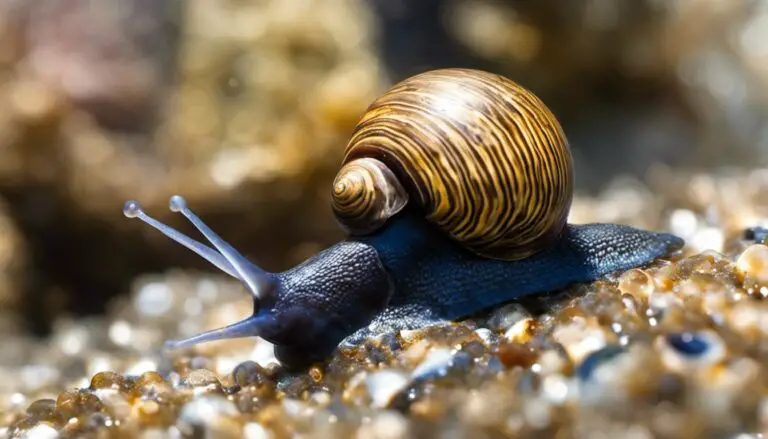
![Do Snails Have A Foot? [Full Guide]](https://allourcreatures.com/wp-content/uploads/2021/11/snail-foot-768x577.jpg)
